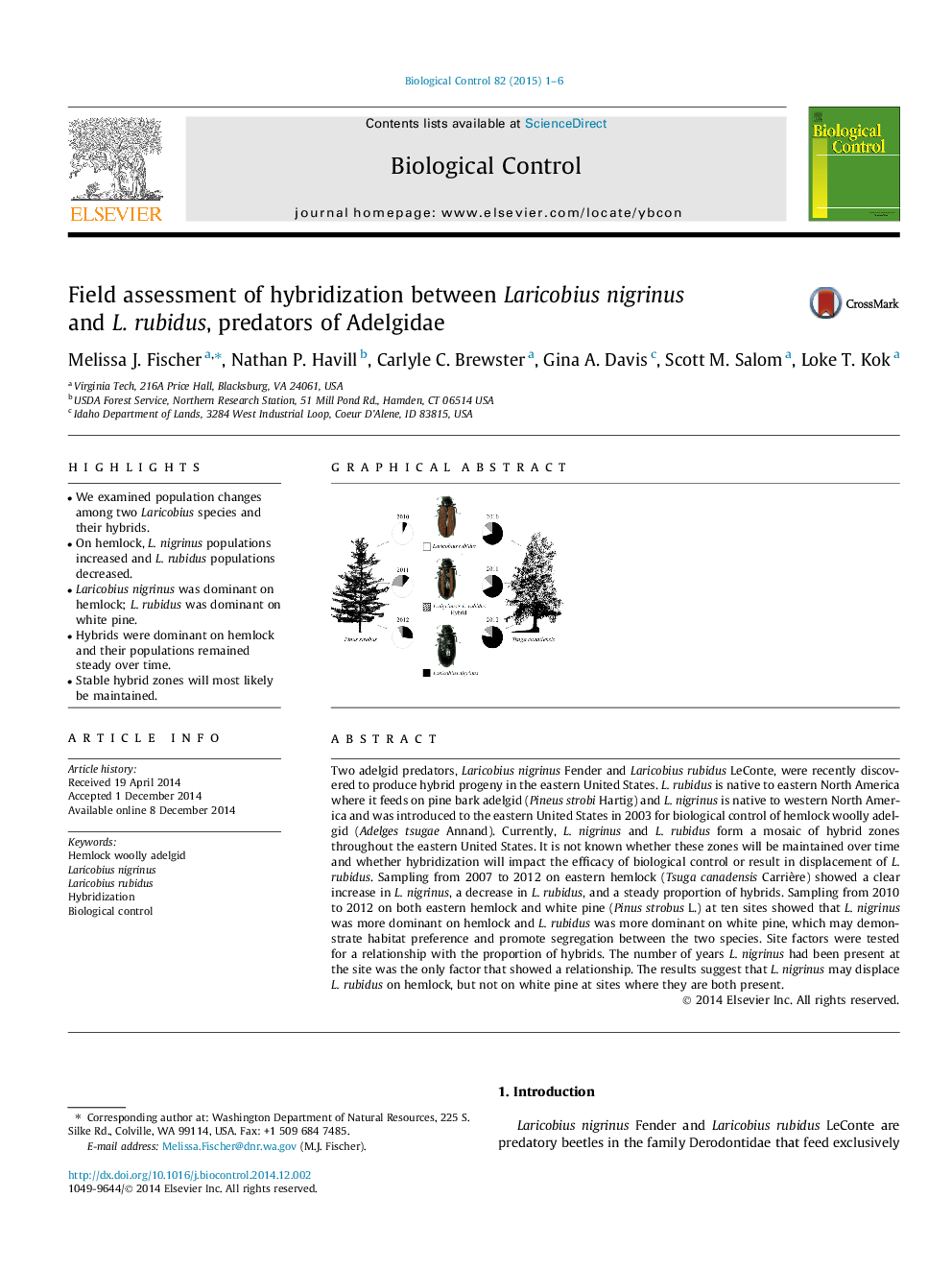| Article ID | Journal | Published Year | Pages | File Type |
|---|---|---|---|---|
| 4503811 | Biological Control | 2015 | 6 Pages |
•We examined population changes among two Laricobius species and their hybrids.•On hemlock, L. nigrinus populations increased and L. rubidus populations decreased.•Laricobius nigrinus was dominant on hemlock; L. rubidus was dominant on white pine.•Hybrids were dominant on hemlock and their populations remained steady over time.•Stable hybrid zones will most likely be maintained.
Two adelgid predators, Laricobius nigrinus Fender and Laricobius rubidus LeConte, were recently discovered to produce hybrid progeny in the eastern United States. L. rubidus is native to eastern North America where it feeds on pine bark adelgid (Pineus strobi Hartig) and L. nigrinus is native to western North America and was introduced to the eastern United States in 2003 for biological control of hemlock woolly adelgid (Adelges tsugae Annand). Currently, L. nigrinus and L. rubidus form a mosaic of hybrid zones throughout the eastern United States. It is not known whether these zones will be maintained over time and whether hybridization will impact the efficacy of biological control or result in displacement of L. rubidus. Sampling from 2007 to 2012 on eastern hemlock (Tsuga canadensis Carrière) showed a clear increase in L. nigrinus, a decrease in L. rubidus, and a steady proportion of hybrids. Sampling from 2010 to 2012 on both eastern hemlock and white pine (Pinus strobus L.) at ten sites showed that L. nigrinus was more dominant on hemlock and L. rubidus was more dominant on white pine, which may demonstrate habitat preference and promote segregation between the two species. Site factors were tested for a relationship with the proportion of hybrids. The number of years L. nigrinus had been present at the site was the only factor that showed a relationship. The results suggest that L. nigrinus may displace L. rubidus on hemlock, but not on white pine at sites where they are both present.
Graphical abstractFigure optionsDownload full-size imageDownload as PowerPoint slide
